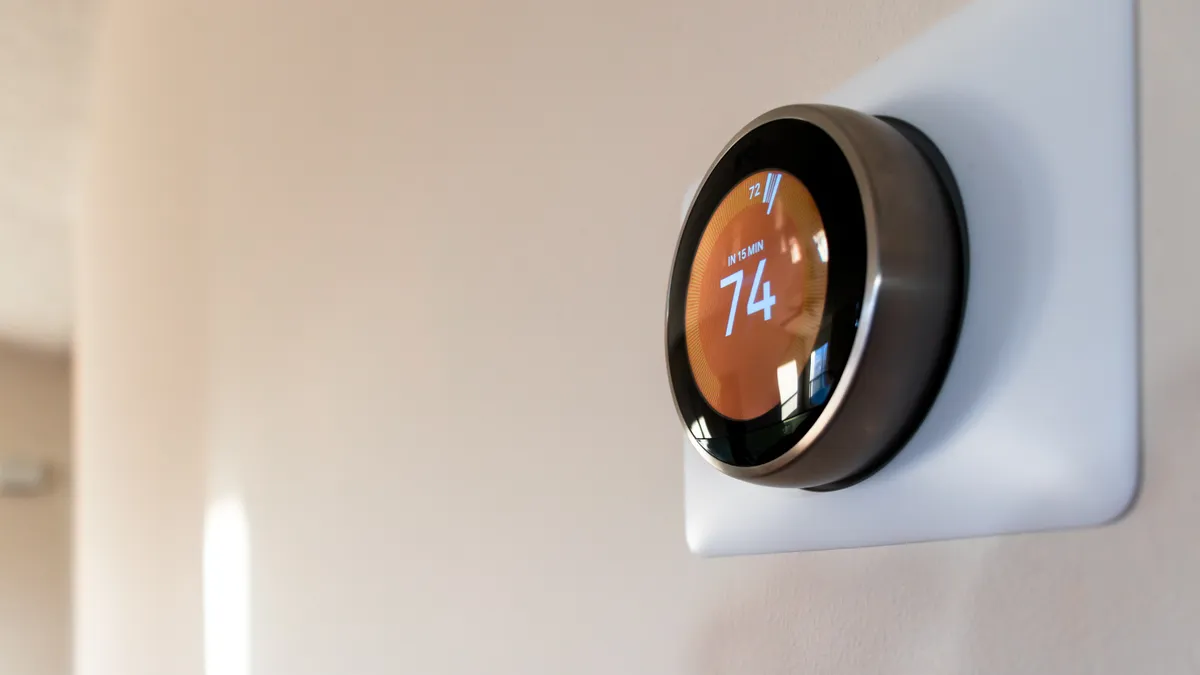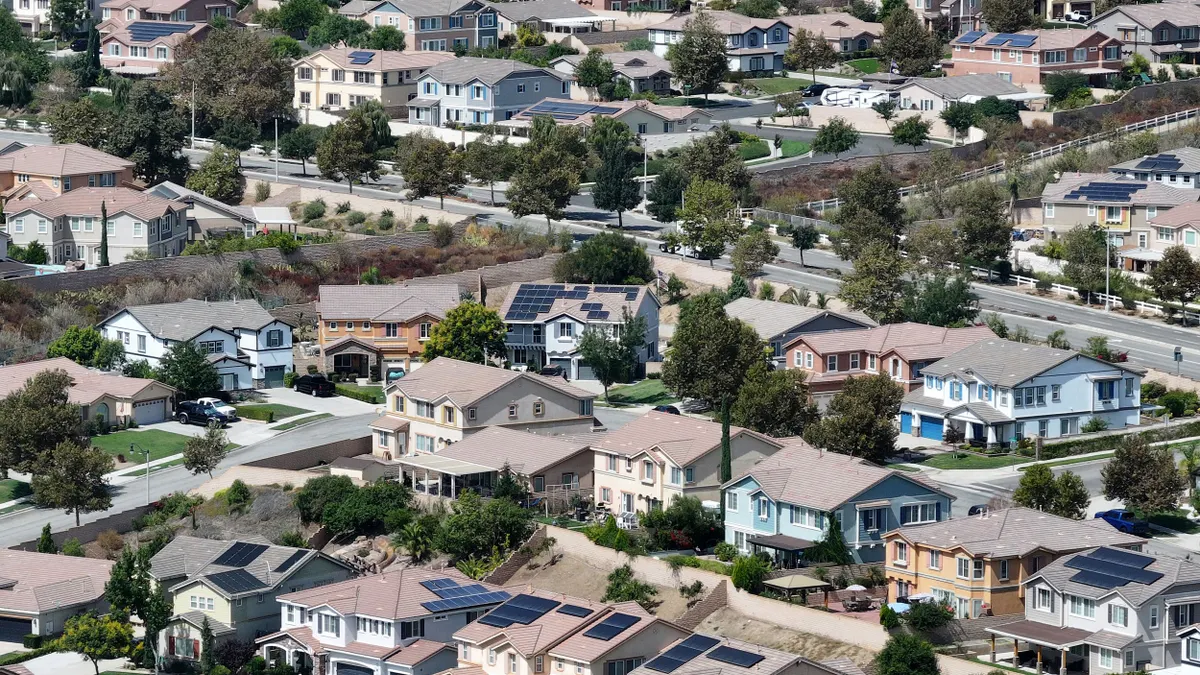Kansas City Power & Light is not a utility trying to avoid the future. The energy sector is changing, and between rolling out electric vehicle charge points and upgrading customer equipment inside the home, the utility is embracing that change in its Missouri territory.
Tyson Brown, demand response program manager at KCP&L, runs the utility's residential, industrial and commercial demand management programs. "If it involves kilowatts, it flows through me," he said during a recent conference call hosted by the Peak Load Management Alliance, to highlight the utility's thermostat program.
Using the Missouri Energy Efficiency Investment Act, KCP&L has undertaken to replace about 60,000 thermostats it rolled out under a previous program, "Energy Optimizer," a decade ago. Now in the second of three multi-year tranches of work, the utility is replacing older pager-based devices with new, Wi-Fi enabled Nest devices that will integrate with the utility's demand management program.
And customers get the new thermostats for free, about a $249 incentive right off the bat. Followed by annual incentives to participate in the utility's demand response program, increased comfort in the home and control over energy use.
"We want to be the trusted energy advisor for all of our customers," said Brown.
As utilities begin to evolve, finding new ways to interact with customers and run their businesses, that "trusted energy advisor" concept has become mantra for a legion of power providers. They now see the utility grid and infrastructure as a way to provide a wider range of services that extends far beyond just electricity. But marketing, data analytics and technology development have never been utilities' strong points. And so increasingly they are partnering with tech-savvy businesses to help them create holistic, streamlined offerings that more closely mirror the retail experience customers are now accustomed to.
For that, KCP&L turned to both Nest and CLEAResult, which installs and services the thermostats, operates the call center and services legacy devices.
"Utilities tend to purchase out of the box turnkey solutions, and then just slap their logo on it and hope for the best...that's not really how I roll."

Tyson Brown
Demand response program manager at KCP&L
The Nest Rush Hour Rewards demand response platform "creates a unique thermal profile for each participant's home," said Brown, and then "tailors their demand response experience." And the utility selected CLEAResult because "they understood the program we're trying to implement isn't just a program, but is part of a larger holistic portfolio of offerings."
Before KCP&L, Brown worked at Honeywell, another large manufacturer of smart thermostats. So he's seen utility demand management programs from both sides, and said that experience has helped inform his strategy for modernizing the system in Kansas City.
"Utilities tend to purchase out of the box turnkey solutions, and then just slap their logo on it and hope for the best," said Brown. "That’s not really how I roll - I prefer a more customized approach to things."
Not KCP&L's first rodeo
In addition to its thermostat demand response program, KCP&L has been pushing to roll out one of the largest electric vehicle charging networks in the country, aiming to install 1,100. And it has been trying to do it in a way that continues to push the boundaries of where traditional utilities have operated.
Last month, the utility put on hold some parts of the charging point rollout, after regulators on the Kansas side of its service territory rejected the utility's plan to ratebase the investment. But most of those projects planned for the Missouri side of KCP&L's territory has continued.
As of this summer, about 700 charging stations had been rolled out to a variety of locations including grocery stores and other big box retailers. All of the stations are public, currently operating under a two-year pilot phase during which they are free to use. There are also 15 fast-charging stations installed in a partnership with Nissan.
"Nationally, we're one of the top growing areas for EV growth," said Kristin Riggins, sustainability products manager at the utility. In the Kansas City region last year, growth in EV sales exceeded 50%.
The charging stations have the capabilities to integrate into demand response programs, but for now the utility is focused on upping the number of vehicles it is supporting. "It will be a huge benefit for KCP&L to have the entire network as a demand response network," said Riggins.
You can read more about the utility's electric vehicle efforts here, and about strategies used to expand access. KCP&L, for instance, wants to lean on EV "ambassadors" to spread the word, enabling the utility to focus elsewhere.
"Our ultimate goal is not to have to do outreach," said KCP&L's Courtney Hughley. "We're not car salesmen, we know electricity."
Creating a customer experience
And that approach is also key to KCP&L's thermostat program. "I’m all for turnkey solutions, they're beautiful," said Brown. But they must address the needs of specific users, moving beyond out-of-the-box approaches.
"CLEAResult does a really good job of creating organic synergies between different program offerings based on the customer’s needs instead of just an operational plan chiseled out three or four years ago," Brown said. Installation of the thermostat can open customers to other programs and offerings, and installation can be combined with energy audits.
Working with Nest and CLEAResult has enabled KCP&L to design a demand response program that is "similar to a retail experience," said Brown. "By taking every offering in our demand side management portfolio and identifying how we can create natural, organic synergies and segues into other program offerings, we can operate as that trusted energy advisor."
"Our intent is to offer our customers an experience where they feel like we're helping them," he said.
Barry Ledford manages the KCP&L thermostat program from CLEAResult's side, and he echoed that idea of creating a "seamless" customer journey. From the time a customer first calls in, they can have a Nest thermostat on their front porch within five days for a self-install. A rebate check could arrive in less than a month.
"We wanted to make sure it was a quick experience," said Ledford. "An entire customer journey that can take as little as three weeks."
The company has a work order management system that is specifically designed for residential demand response programs. For instance, data that field technicians capture while they are working with customers is collected and used for marketing other utility programs or energy offerings.
"The work order management system really helps us have a seamless customer journey," said Ledford.
The program largely sells itself, says Brown. There's been very little marketing necessary to enroll customers. And KCP&L is targeting existing Nest customers also - if someone already has their own thermostat installed, they are still eligible not just to participate in the program but to get an installation credit as well.
"The end game isn’t connected thermostats...the end game is to have a connected home that has energy efficiency and demand response measures built into it across the board."

Tyson Brown
Demand response program manager at KCP&L
Ultimately, KCP&L is playing the long-game when it comes to utility evolution: working to roll out infrastructure that will help engage more customers.
"The end game isn’t connected thermostats," said Brown. "The end game is to have a connected home that has energy efficiency and demand response measures built into it across the board. From your dishwasher running during the day because there's solar on the roof, to your hot water heater taking wind, to the utility managing peak demand and locational benefits of the home.
"The house becomes a battery at the end of the day."





















